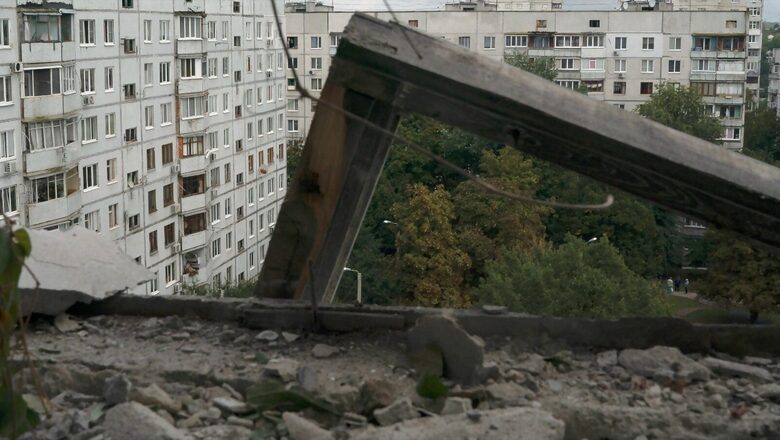
views
In his seminal book Vom Kriege (On War), Clausewitz devotes an entire chapter to the ‘Superiority of Numbers’. It is well known that ‘strategy fixes the point where, the time when, and the numerical force with which the battle is to be fought’. By this triple determination, it has, therefore a very essential influence on the issue of combat.
He further states that if we strip the combat of all modifications which it may undergo according to its immediate purpose and the circumstances from which it proceeds, if we set aside the valour of the troops — because that is a given quantity — then there remains only the bare conception of the combat; that is a combat without form in which we distinguish nothing but the number of the combatants. This number will therefore determine victory.
But superiority in numbers in a battle is only one of the factors employed to produce victory. Further, superiority has ratios — it could be two-fold, three-fold or four-fold — and increasing in this manner, it will at some point overpower everything else.
This is simplistic but the problem which has troubled many minds is what the size of a force should be beyond which it becomes excessive. The skill, therefore, lies in not absolute superiority, but producing relative superiority at the decisive point at the correct time.
Force concentration became integral to the Prussian military operational doctrine, which aimed to cause disproportionate losses on the enemy and therefore destroy the enemy’s ability to fight. The ratio of armed forces became the dominant factor. Concentration of force requires mobility to permit rapid concentration and power to be effective in combat once concentrated. Both elements were present in the tank which became the decisive weapon platform in World War II.
While commanders desire numerical superiority over their adversaries, they are not always able to achieve it. Instead, they use methods such as manoeuvre to achieve local superiority in combat power. Force multipliers, improving command and control, enhancing lethality, and seeking to possess better information than their opponents allow assets to contribute relatively more to a fight, thereby potentially offsetting a requirement for mass.
Success in battle is also a function of strategy, operational employment, doctrine, training, combat experience, leadership, force structures and morale.
However, in the past few years, more emphasis has been placed on ‘indirect mass’, command and control, precision weapons, lethality, robust networks and superior information as a substitute for ‘actual’ mass. However, what happens when an adversary combines these measures with actual mass? If both sides are lethal, networked, and effectively commanded, then what are the factors that determine the outcome on the battlefield?
The US first confronted the problems of traditional force superiority being unable to prevail in Vietnam, where it was argued that a 10:1 force ratio was required for counterinsurgencies. More recently, the world has been witness to their removal of ‘boots on ground’ from Afghanistan. That is in spite of the extreme overmatch in weapons and technology. Going by Western media, the Russian forces are heading on the same path in Ukraine.
Russia’s ongoing invasion of Ukraine is the largest armed conflict in Europe since World War II and has fundamentally altered the continent’s security landscape. Before Russia’s invasion of Ukraine, many observers looked at Russia’s overwhelming combat power and thought Russia would achieve a quick victory. Because Russia had numerical advantages in weapon systems such as tanks, artillery, attack helicopters and planes.
Russians had numbers on their side, or more precisely a number; the 3:1 rule, the force ratio by which attackers must outnumber defenders in the plains in order to prevail. Russia, clearly, could easily amass that advantage as it outnumbered the Ukrainian many times over no matter what the key determinant was, be it infantry, tanks, artillery, air defence systems or aircraft.
Based on historical battle analysis, the 3:1 rule of thumb suggests that attackers should have at least three soldiers for every defending soldier to overcome the defenders’ natural advantages and increase the probability of offensive success. An important condition for the 3:1 force ratio is that attackers’ and defenders’ military capabilities should be qualitatively similar. If one side enjoys significant qualitative and technical advantages over an adversary, then they might secure success without meeting that rule of thumb.
The force ratios of course vary from attack on prepared defences 3:1 to attack on hasty defences 2.5:1, for counter attack on a flank it is 1:1 and change drastically to upwards of 6:1 for attacks in extreme high-altitude areas. These calculations, of course, will change drastically once you enter built up areas and confront a conventional force, militias and have to deal with a civil population.
As per a recent article in the Economist, “Mariupol’s grim experience holds useful lessons for armies all over the world.” While all armies try to avoid fighting in cities, they are increasingly being forced to do so. Urban warfare is slow and costly for the troops waging it, particularly as you want to limit collateral damage to the civilian population and to key infrastructure. Over the years, cities have grown in size with more people living in urban than rural areas and ‘they can envelop armed forces’.
While the Russian army did not adhere to the 3:1 rule of thumb when structuring its invasion force, this does not necessarily indicate that it does not consider force ratios irrelevant. Instead, it is likely that Russian leadership underestimated the Ukrainian resolve. The Russian military planners incorrectly assumed that Ukrainian forces were qualitatively inferior and lacked the capability to exercise command and control of such a large operation.
Clausewitz proclaimed: “The defensive form of warfare is intrinsically stronger than the offensive.” By the Franco-Prussian War in 1870, Prussians distilled this to require triple the attackers. World War I, with years of stalemate in the trenches as combatants struggled to break through defences, lent further credibility to the idea.
However, one of the major factors determining outcomes is the ability to control where and when to have decisive engagements. If in the course of battle, the sides commit their reserves and redeploy forces from other sectors the constant coefficient changes and the possibilities are immense.
This has been best summed up by Sun Tzu who said: “The musical notes are only five in number but their melodies are so numerous that one cannot hear them all. The primary colours are only five in number but their combinations are so infinite that one cannot visualise them all. The flavours are only five in number but their blends are so various that one cannot taste them all. In battle there are only the normal and extraordinary forces, but their combinations are limitless; none can comprehend them all. For these two forces are mutually reproductive; their interaction as endless as that of interlocked rings. Who can determine where one ends and the other begins?”
But these numbers are effective in a conventional conflict where things are ‘black’ and ‘white’, the outcome in a hybrid conflict or a grey zone environment is no longer dictated by the logic of these numbers. Recent conflicts, which have been characterised by blurring lines between war and peace, state and non-state actors, regular and irregular warfare, conventional and unconventional means the imponderables are many.
To quote Robert Gates, “The categories of warfare are blurring and no longer fit into neat, tidy boxes. One can expect to see more tools and tactics of destruction — from the sophisticated to the simple — being employed simultaneously in hybrid and more complex forms of warfare.”
A recent development as per Jennifer Kavanagh “has been the extensive influence of non-state groups that are able to act autonomously on the international stage. These actors have increased in number and independence in recent years, as well as in the types of power they are able to wield. Their actions not only amplify state power but also constrain state flexibility”. These non-state groups have also used their power in ways and speeds that were not possible before social media.
The other factor highlighted by Jennifer Kavanagh is the extent to which relationships between countries serve as key sources of power that are decisive in shaping conflict outcomes. Typically, power is measured by looking at capabilities, such as military weapons or GDP. However, as globalisation and changes in technology make it cheaper and easier for goods, services, and information to flow across borders and advance interconnectedness between countries, relationships such as alliances and trade networks have become as important to any assessment of national power as capability-based measures. Ukraine has benefitted from military and economic assistance, intelligence and infrastructure support.
Then there is the issue of holding captured territory. Russia appears to have changed course to a seemingly more limited strategy of expanding its control in Eastern and Southern Ukraine. There are no exact formulas regarding how many soldiers are required, but as per a report in CSIS a ‘force ratio of as many as 20 soldiers per 1,000 inhabitants has sometimes been necessary to pacify a hostile local population’. At the end of World War II, for example, there were 101 US soldiers per 1,000 inhabitants in the US controlled sector of Germany. More recently, there were nineteen US and European soldiers per 1,000 inhabitants in Bosnia in 1995 and twenty soldiers per 1,000 inhabitants in Kosovo in 2000.
Lower ratios are generally insufficient to pacify hostile populations. In Iraq, for instance, the US had seven soldiers per 1,000 inhabitants and faced persistent problems even with the help of Iraqi government forces and Sunni militia members. In Afghanistan, the figure was only one soldier per 1,000 inhabitants, along with the help of Afghan National Security Forces, the outcome is well known. The copy book remains the Indian Army’s spectacular success in East Pakistan and early exit after the birth of Bangladesh but that was backed by a ground swell of popular support.
The truth that endures is that the complexity in conflict stems from the interaction with the opponent. To accept superiority of numbers as the one and only rule, and to reduce the art of war to a formula of numerical superiority at a certain time in a certain place may be an oversimplification. Did the Americans miscalculate numbers in Vietnam and Afghanistan and are the Russians treading the same path?
At its core, war is about power, who possesses it, who doesn’t, and who can use it effectively. Russia has shown that it is willing to use military force to achieve its policy goals regardless of international opinion or condemnation. Hence, while we cannot eliminate paying attention to one of warfare’s oldest considerations, these numbers need to be recalculated in a multi-dimensional conflict. Numbers do matter but the essence lies in how you use these numbers.
Read all the Latest Opinion News and Breaking News here
















Comments
0 comment